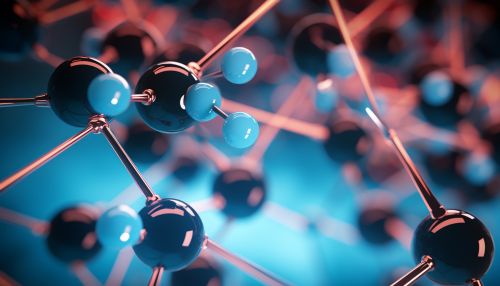Molecule
Overview
A Molecule is a group of two or more atoms held together by chemical bonds. Molecules are distinguished from ions by their lack of electrical charge. The structure and interactions of molecules are primarily determined by their shape, size, and the nature of the chemical bonds that hold the atoms together.
Structure of Molecules
Molecules are composed of atoms that are bound together by chemical bonds. These bonds are formed when atoms share or exchange electrons. The type of bond that forms between atoms can greatly influence the properties of the molecule.


Atomic Composition
The atoms that make up a molecule can be of the same element, such as in the oxygen molecule (O2), or they can be of different elements, as in the water molecule (H2O). The type and number of atoms in a molecule determine its chemical formula.
Chemical Bonds
Chemical bonds can be either covalent, ionic, or metallic. Covalent bonds are formed when atoms share electrons, ionic bonds are formed when one atom transfers one or more electrons to another atom, and metallic bonds are formed when electrons are shared among a lattice of positively charged ions.
Properties of Molecules
The properties of molecules are largely determined by the type of atoms they contain and the structure of the molecule. These properties include the molecule's physical characteristics, such as its size and shape, as well as its chemical characteristics, such as its reactivity and polarity.
Physical Properties
The physical properties of a molecule include its size, shape, and state of matter at room temperature. For example, water molecules are small, have a bent shape, and are liquid at room temperature, while carbon dioxide molecules are linear and are gas at room temperature.
Chemical Properties
The chemical properties of a molecule are determined by the type and arrangement of its atoms. These properties include the molecule's reactivity, polarity, and ability to form hydrogen bonds. For example, water molecules are highly polar and can form hydrogen bonds, which gives water its unique properties.
Molecular Interactions
Molecules interact with each other and with other substances through a variety of mechanisms. These interactions can result in physical changes, such as changes in state, or chemical changes, such as reactions that form new substances.
Intermolecular Forces
Intermolecular forces are the forces of attraction between molecules. These forces can be weak, such as in the case of London dispersion forces, or strong, such as in the case of hydrogen bonding.
Chemical Reactions
Molecules can also interact through chemical reactions. In a chemical reaction, the bonds between atoms in the reacting molecules are broken and new bonds are formed, resulting in the formation of new substances.
Applications of Molecules
Molecules have a wide range of applications in various fields, including chemistry, biology, medicine, and materials science. Understanding the properties and behavior of molecules is crucial in these fields.
See Also
Chemical bond Covalent bond Ionic bond Metallic bond Intermolecular forces Chemical reaction
